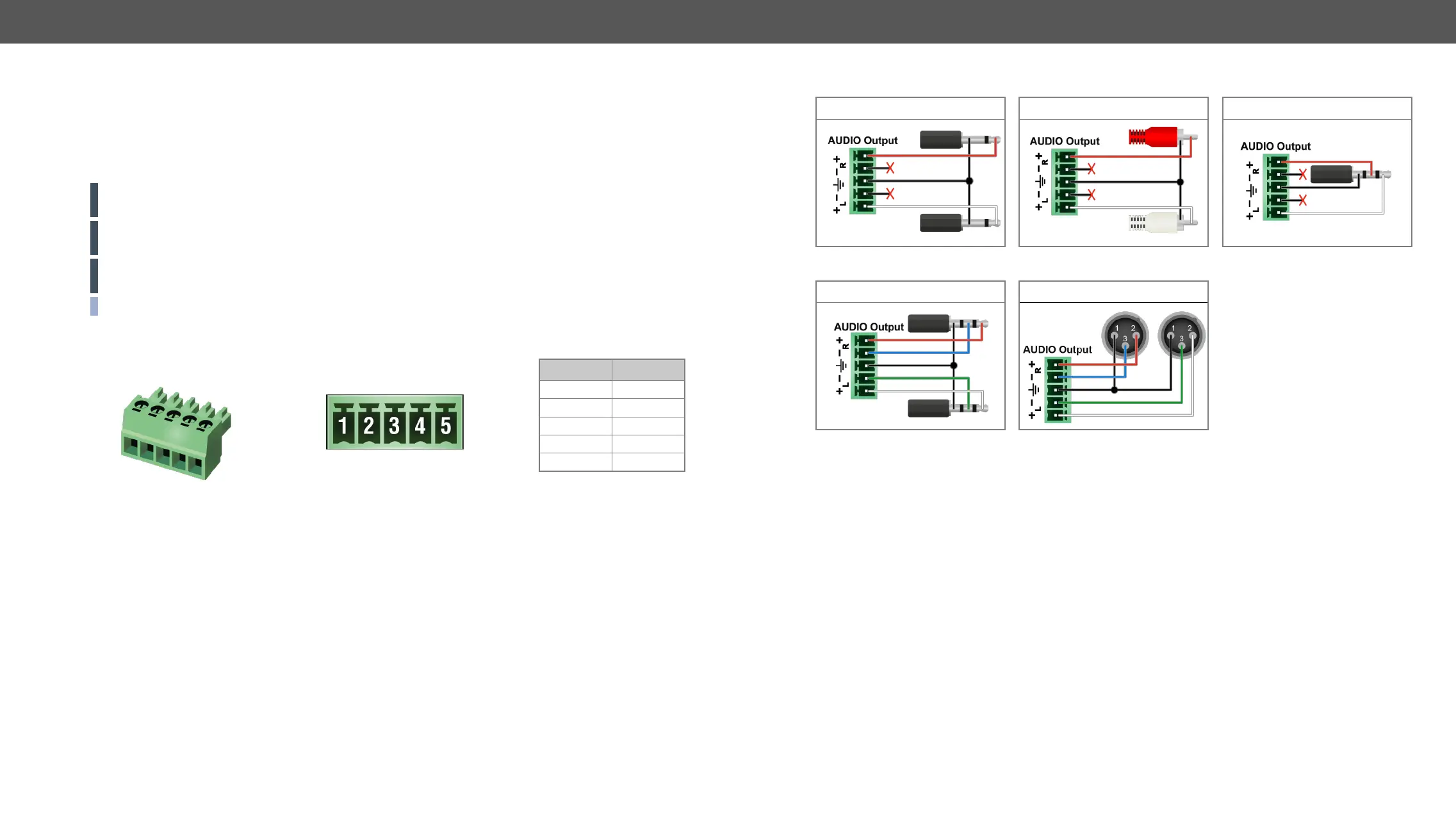11. Appendix UCX series – User's Manual 101
Cable Wiring Guide
Inputs and outputs of audio devices are symmetric or asymmetric. The main advantage of the symmetric
lines is the better protection against the noise therefore, they are widely used in the professional audio
industry. Symmetric audio is most often referred to as balanced audio, as opposed to asymmetric, which is
would like to help users assembling their own audio cables. See the most common cases below.
ATTENTION! Symmetric and asymmetric lines can be linked with passive accessories (e.g. special
cables), but in this case half of the line level is lost.
ATTENTION! There are numerous types of regularly used connector and cable types to connect audio
ATTENTION! Never join the phase-inverted (negative, cold or -) poles (either right and left) to the ground
or to each other on the output side, as this can damage the unit.
INFO: Use a galvanic isolation in case of a ground loop.
Audio Ports
The Pinout of the 5-pole Phoenix Connector
Compatible Plug Type: Phoenix
®
Pin nr. Signal
1
2
3 Ground
4 Right-
5 Right+
From Balanced Output to Unbalanced Input
Phoenix - 2 x 6.3 (1/4") TS Phoenix - 2 x RCA Phoenix - 3.5 (1/8") TRS
From Balanced Output to Balanced Input
Phoenix - 2 x 6.3 (1/4") TRS Phoenix - 2 x XLR
